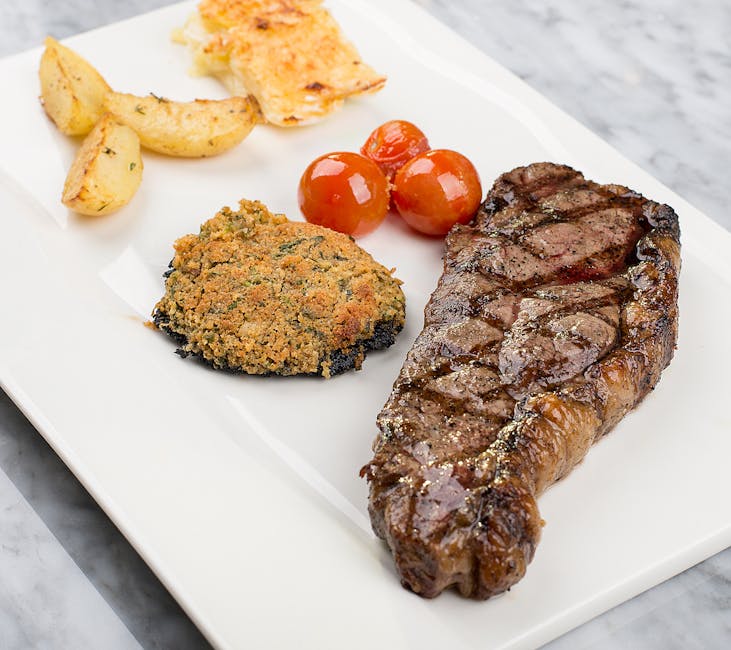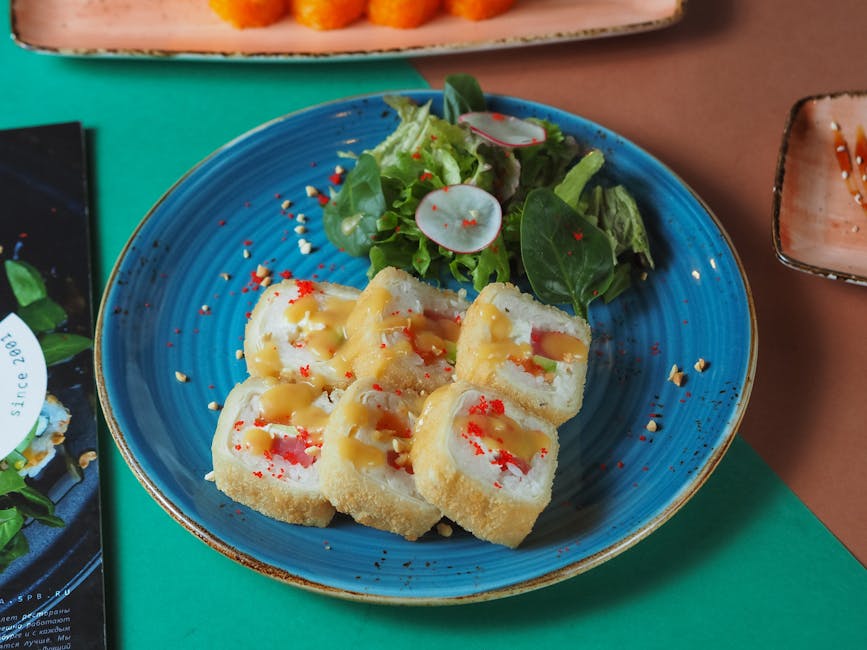Unleashing Creativity: How to Create a Signature Dish
Food is not just a necessity; it is an art form that allows one to express creativity, passion, and ingenuity. Chefs around the world strive to create dishes that not only tantalize the taste buds but also leave a lasting impression on diners. A signature dish is more than just a recipe; it is a culinary masterpiece that embodies the soul of the chef, representing their unique style, flavors, and techniques. In this article, we will delve into the art of creating a signature dish, exploring the various elements that contribute to its success and how you can unleash your creativity in the kitchen.
The Inspiration Behind a Signature Dish

Every great dish starts with inspiration. Whether it’s a childhood memory, a favorite ingredient, or a cultural influence, the inspiration behind a signature dish plays a crucial role in its creation. Chefs often draw from their personal experiences, travels, and culinary background to develop a dish that reflects their individuality.
Take, for example, Chef Thomas Keller’s iconic dish, Oysters and Pearls. Inspired by his love for caviar, this dish features a delicate tapioca pudding with oysters and caviar, creating a harmonious blend of flavors and textures. By drawing inspiration from a single ingredient, Chef Keller was able to create a dish that has become synonymous with his culinary style and innovation.
Understanding Flavor Profiles

Creating a signature dish is not just about combining random ingredients; it’s about understanding flavor profiles and how different ingredients interact with each other. A successful dish balances various tastes, textures, and aromas to create a harmonious and memorable dining experience.
When developing a signature dish, it’s essential to consider the five basic tastes – sweet, salty, sour, bitter, and umami. By incorporating a variety of flavor profiles into a dish, you can create depth and complexity that will captivate the palate. Experimenting with different herbs, spices, and seasonings can elevate a dish from good to exceptional.
For instance, Chef Massimo Bottura’s signature dish, Five Ages of Parmigiano Reggiano, showcases the versatility of this iconic Italian cheese. By using Parmigiano Reggiano in five different forms – foam, sauce, crisp, souffl, and liquid – Chef Bottura creates a multi-dimensional dish that celebrates the rich flavors of this cheese in a unique and innovative way.
The Importance of Presentation

They say we eat with our eyes first, and presentation plays a vital role in the success of a signature dish. The way a dish is plated can elevate the dining experience, making it visually appealing and inviting. Chefs often pay close attention to the colors, shapes, and textures of each component, creating a feast for the eyes as well as the palate.
Consider Chef Heston Blumenthal’s famous dish, Sound of the Sea. This visually stunning dish is presented on a glass plate filled with sand and seaweed, accompanied by edible ‘sand’, ‘seaweed’, and ‘sea foam’. The dish not only captures the essence of the sea but also engages multiple senses, immersing diners in a unique and memorable culinary experience.
Experimentation and Innovation

Creating a signature dish requires a willingness to step outside your comfort zone and experiment with new ingredients, techniques, and flavor combinations. Innovation is key to pushing the boundaries of traditional cooking and creating dishes that stand out in a crowded culinary landscape.
Chef Ferran Adri, known for his avant-garde approach to cuisine, revolutionized the culinary world with his signature dish, Spherical Olives. By using spherification techniques, Chef Adri transformed traditional olives into bite-sized spheres filled with olive juice, creating a surprising and delightful culinary experience. This innovative dish exemplifies the power of experimentation and thinking outside the box when creating a signature dish.
Personalization and Authenticity
A signature dish should be a reflection of the chef’s unique style, personality, and culinary philosophy. Personalization is key to creating a dish that stands out and leaves a lasting impression on diners. Whether it’s a twist on a classic recipe, a fusion of different cuisines, or a creative use of local ingredients, adding a personal touch to a dish can elevate it to a whole new level.
Chef Jos Andrs’ signature dish, the Spanish-style tapas known as Patatas Bravas, is a perfect example of personalization and authenticity. This simple yet flavorful dish features crispy potatoes topped with a spicy tomato sauce and aioli, showcasing Chef Andrs’ Spanish heritage and love for bold flavors. By staying true to his roots and infusing the dish with his unique culinary perspective, Chef Andrs has created a dish that has become a crowd favorite and a symbol of his culinary identity.
Feedback and Iteration
Creating a signature dish is an iterative process that requires feedback, experimentation, and constant refinement. Chefs often rely on feedback from diners, colleagues, and mentors to fine-tune their dishes and make them even better. Constructive criticism can provide valuable insights and help chefs identify areas for improvement, leading to the evolution of a dish over time.
Take, for example, Chef Gordon Ramsay’s signature dish, Beef Wellington. This classic British dish has undergone numerous iterations and refinements over the years, as Chef Ramsay has incorporated feedback from diners and his team to perfect the recipe. By listening to feedback and being open to new ideas, Chef Ramsay has transformed Beef Wellington into a timeless dish that continues to captivate diners around the world.
Common Misconceptions
One common misconception about creating a signature dish is that it has to be complex or extravagant to stand out. In reality, simplicity can be just as impactful, as long as the flavors, presentation, and personal touch are executed well. Another misconception is that a signature dish has to be entirely original, when in fact, drawing inspiration from existing recipes or techniques can lead to innovative creations that are uniquely yours.
Conclusion
To wrap things up, creating a signature dish is a journey of exploration, experimentation, and creativity. By drawing inspiration from your experiences, understanding flavor profiles, focusing on presentation, embracing innovation, personalizing your dishes, seeking feedback, and dispelling common misconceptions, you can develop a dish that is not only memorable but also a true reflection of your culinary identity. Whether you’re a seasoned chef or a home cook, don’t be afraid to unleash your creativity in the kitchen and create a signature dish that will leave a lasting impression on those who have the pleasure of experiencing it.
Remember, a signature dish is more than just food; it’s a story waiting to be told, a journey waiting to be savored, and a masterpiece waiting to be shared with the world.




